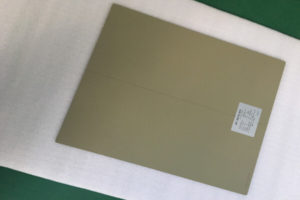The types of grids in radiography are made of lead foil (that is, thin lead du strips with a thickness of 0.05~0.1 mm) spaced at a certain distance (0.15~0.35 mm) and arranged in parallel or at a certain slope. The aluminum, paper or wood strips that have been X-rayed are filled and fixed, and both sides are supplemented with aluminum or synthetic resin protective layers.
Types of grids in radiography is extremely harmful in X-ray photography. Because of its biological effects, biological cells are inhibited, damaged, or even killed after being irradiated with different doses of X-rays. Therefore, scattered rays are both This increases the unnecessary radiation dose and radiation damage to the examinee and staff, and increases the contrast of the X-ray photo, and even the possibility of losing useful information. For this reason, removing the scattered rays in the X-ray photography is It is very important, and the types of grids in radiography are designed for this purpose.
When photographing, the types of grids in radiography are placed between the film and the body. The scattered rays cannot pass through the lead gap because of the angle with the lead bar, so most of them are absorbed by the lead bar, which greatly reduces the film or flat-panel detectors. The scattered rays received on the surface improve the contrast of the image, improve the imaging quality of the X-ray film, and reduce the damage to the human body.

Author:Lillian
Tel: +86 18953679166
Email: service@newheek.com
Company: Weifang Newheek Electronic Tech Co., Ltd.
Address: E Building of Future Star Scientific Innovation Industrial Zone of No.957 Wolong East Street, Yulong Community, Xincheng Sub-District Office, Weifang Hi-tech Zone, Shandong Province, China